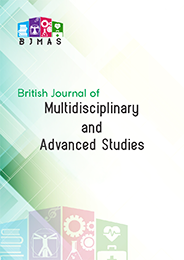Influence of Risk Transfer on Financial Performance of Pension Funds in Nairobi, Kenya
DOI:
https://doi.org/10.37745/bjmas.2022.04135Abstract
Pension funds in Kenya have been recording poor performance which could be attributed to exposure to unmanaged risks due to weak enforcement of pension laws. The objective of this study was to examine the influence of risk transfer on financial performance of pension funds in Kenya. Research was guided by modern portfolio theory. Research adopted descriptive survey research design, using objectively prepared questionnaires, collected data from 36 chief risk officers of the 36 targeted pension funds in Kenya. Pilot study was conducted in Machakos county pension fund to test for reliability and validity of research instruments. Data obtained was analysed through descriptive statistics and inferential statistics. Descriptive statistics included mean, frequency, percentage as well as standard deviations. Inferential statistics was conducted through Pearson correlation analysis and multiple regression analysis. The research found that risk transfer (β=0.717) lead to significant changes in financial performance of pension funds in Kenya. The study concluded that risk transfer significantly influenced financial performance of pension funds in Kenya. Further, the study recommended that Kenyan government through RBA needs to develop comprehensive guidelines for pension funds in regard to risk transfer arrangements. The study recommends that management of pension funds in Nairobi, Kenya needs to launch public awareness campaigns to educate pension fund members about implications of risk transfer on financial performance.Downloads
Downloads
Published
Versions
- 07-08-2024 (2)
- 26-07-2024 (1)












